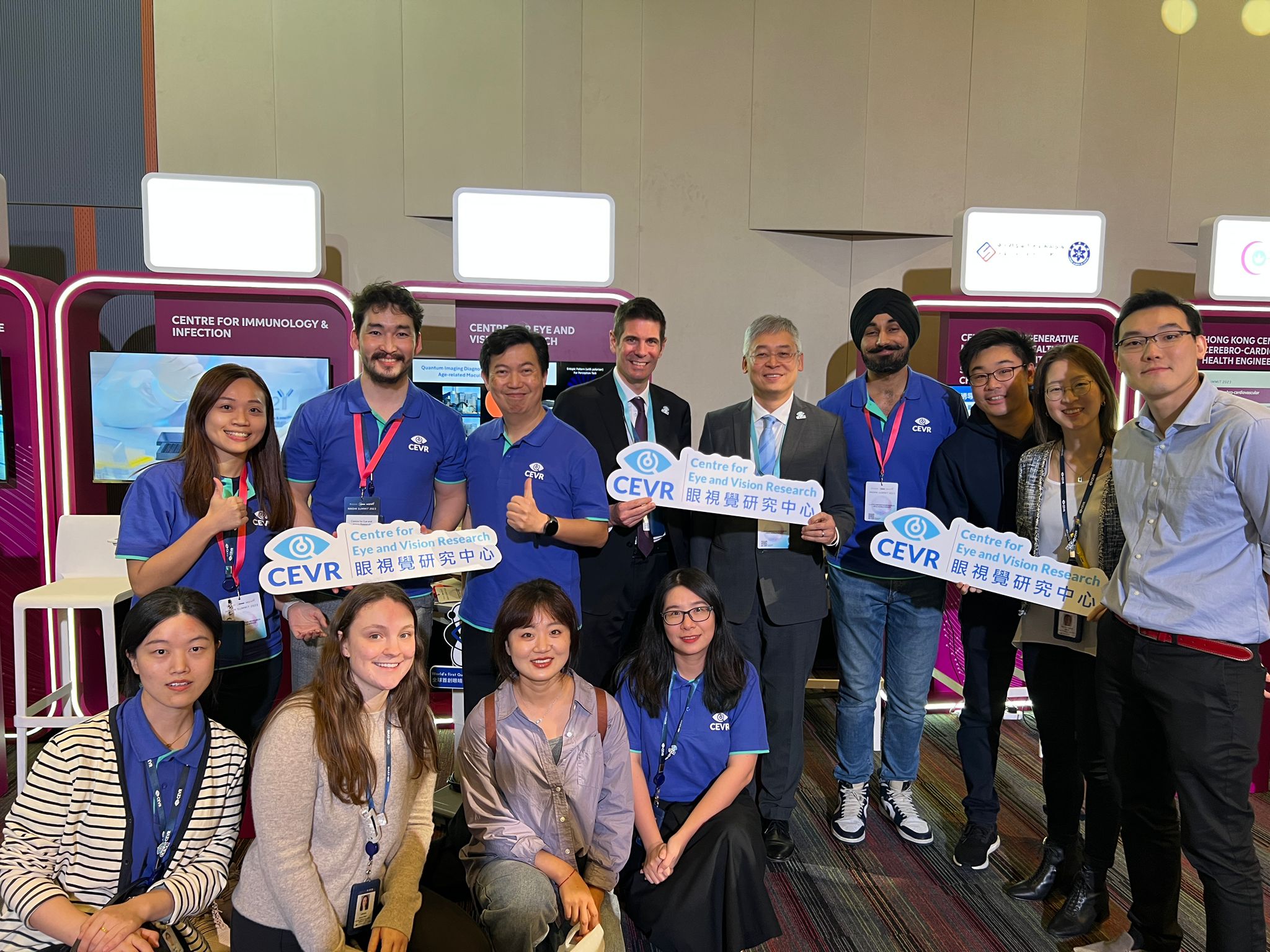Navigating the world safely can be a major challenge for people with vision impairments. One award-winning new invention aims to change that, while another aims to diagnose a common eye disease earlier, potentially preventing vision loss in the first place.
The Centre for Eye and Vision Research (CEVR), a Hong Kong-based collaboration between the University of Waterloo and the Hong Kong Polytechnic University, recently won gold medals for both the inventions it entered in the Asia Exhibition of Innovations and Inventions Hong Kong.
"It's encouraging for our teams to be recognized in this way and an indication of the maturity of these inventions," said Dr. Ben Thompson, a professor at Waterloo's School of Optometry & Vision Science and CEO and scientific director of CEVR. "This recognition will help accelerate the transition of these projects from research to commercial success."

Detecting macular degeneration earlier
One of the inventions is the world's first piece of quantum technology in vision science. It's a collaboration between quantum optics experts, particularly Drs. Dmitry Pushin, David Cory and Dusan Sarenac of Waterloo, and Waterloo and Hong Kong vision researchers led by Thompson. The underlying technology is a structured light beam that people even at the earliest stages of macular degeneration perceive differently than those without the disease.
Macular degeneration is the leading cause of vision loss in people over the age of 55, affecting some 2.5 million Canadians. Because it damages central vision, it can severely impair patients' ability to read, drive and work.
Detecting the disease early, before irreversible vision loss has occurred, could allow patients to make lifestyle changes or get treatments that slow down or stop the progression of the disease. However, no technology currently on the market can detect macular degeneration until damage has begun. The team behind the quantum imaging diagnostic tool aims to change that.
"The quantum team has developed a laser beam that can be wrapped around a central beam like a corkscrew," said Thompson. "It's basically a complex 3D pattern of light polarization. If you look at this laser beam through a camera, you just see a uniform field of light. But if you look at it with the human eye, the polarization interacts with the nerve fibres at the back of the eye, which also have polarization properties. This projects a starburst pattern that is very sensitive to early changes in the retina."

The team has developed a prototype that relies on patients to report what they see. Clinical testing with this prototype is yielding promising results. However, the scientists are also working on an improved system that will directly record the reflected structure of light from the patient's retina. This would make the technology less subjective and more accessible.
To commercialize the screening system, a spin-out company, Incoherent Vision Inc., has been set up in Canada and is attracting investor attention. The company is also in the process of setting up a subsidiary in Hong Kong.
Using augmented reality to navigate more safely
The other award-winning technology is an augmented reality navigation system for people who already have vision loss. It can be used with any extended reality headset system.
Using AI, the system uses data from the headset's camera to identify what's in the user's surroundings and find a safe path through obstacles. This path is indicated with an arrow that can be calibrated to be visible to individual users, no matter the pattern of their vision loss. The system can also inform the user of hazards through a sound or buzz.

The ObstAR system has been developed with input from people with various types of visual impairments. The team is now collecting additional real-world user data and feedback. It plans to launch a spin-out company next year with the hope of getting a product to market within a few years.
"The recognition that these inventions are among the top in Asia speaks to their creativity and potential," said Thompson. "Ultimately, both projects aim to help people lead independent, productive lives, which is good for them and good for society."






